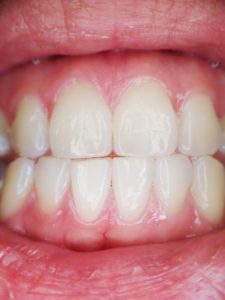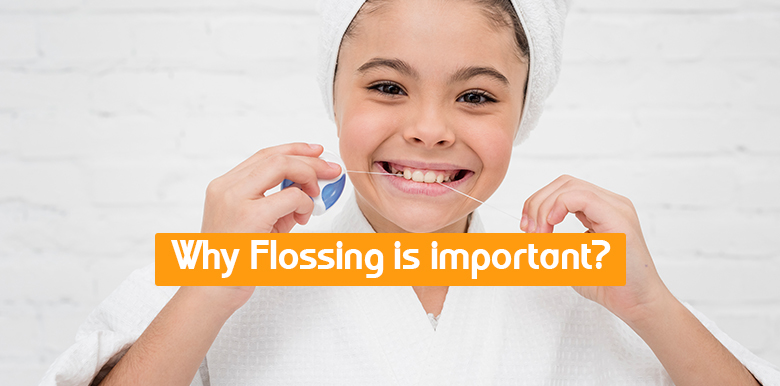Floss is a tool specifically made to remove plaque from the tight spaces between the teeth and under the gums. Flossing before you brush also helps make brushing more effective: With less plaque caught between your teeth, the fluoride in toothpaste can get to more parts of your mouth. Think of floss and a toothbrush as a detail paintbrush and paint roller, respectively. You could paint your living room walls with just one of the tools, but using them together will provide a much more satisfactory result.
Protect your gums

Protects your Gums
When you neglect flossing, plaque and bacteria can easily build up. If they are not removed properly the bacteria will eventually begin to irritate gum tissue, and this will get worse as bacteria increases. When left untreated, this can eventually cause Gingivitis – a periodontal disease that causes red and puffy gums to bleed easily.
And your teeth

And your Teeth
As well as causing irritation, the bacteria between your teeth will also destroy your tooth’s enamel, causing a cavity. Flossing will remove this plaque to prevent the build-up of harmful bacteria. Regularly flossing is a great way to check your mouth for potential cavities, as well as swelling or redness. It will also make your teeth look brighter by removing plaque and excess food that you may not spot in a mirror.
Protects from other diseases

Protects from other Diseases
If left untreated, bacteria in an unhealthy mouth can harm the rest of your body. Gingivitis can enter the bloodstream and travel to other parts of the body, leading to heart disease, diabetes and respiratory illnesses. Flossing only takes a couple of minutes out of your day, but will have huge benefits on your long-term health.
In fact, there’s an increasing amount of evidence linking periodontal disease to an increased risk of heart disease, although more studies are needed to confirm this claim. Some researchers think that mouth infections, like any infections, can increase the levels of inflammatory substances in the blood, which can promote blood clots and slow blood flow to the heart. Another theory is that bacteria from a mouth infection can easily enter the bloodstream and impact your cardiovascular system.
In addition, flossing gives you the opportunity to regularly examine your mouth for any swelling or redness and to take a good look at your teeth, tongue, and gums. Certain conditions including some cancers, HIV/AIDS, substance abuse and eating disorders can cause lesions in your mouth and redness and swelling of the gums.
Good for your overall health

Good for your Overall Health
Flossing after a meal is easy and can be done anywhere. Not only does regular flossing help you practice good oral hygiene, but it can also help you maintain a healthy diet and lifestyle, as flossing after eating will make you less tempted to snack.
Flossing is a step to keeping your gums healthy. Combined with brushing and using a rinse daily, you could keep your smile healthy and beautiful for life. Floss can get into the space between the teeth and gums, removing much of the food and plaque that a toothbrush or mouthwash can’t move.
